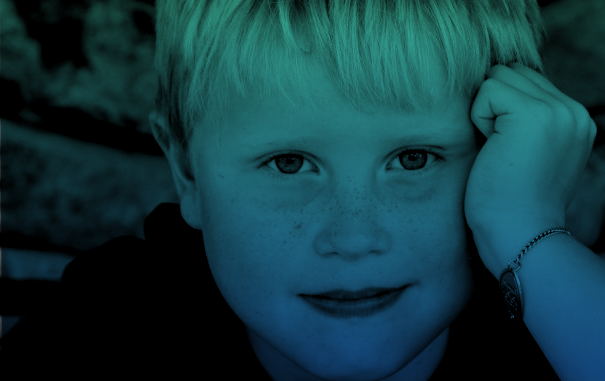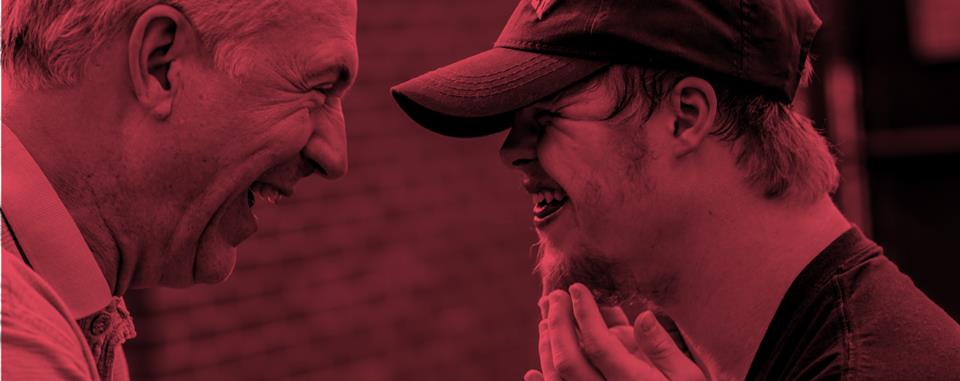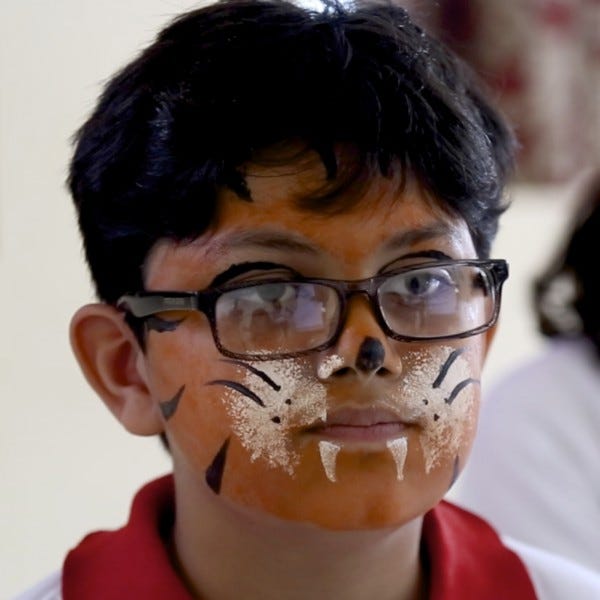Technology is advancing rapidly, taking us on rushing journey where we don’t quite know the destination. Anni Rowland-Campbell takes us through some of the important issues and theories of ‘the digital age’: where we are now and what’s to come. She argues that, if humanity is to be preserved, the philanthropic sector must place itself firmly at the forefront of determining where we’re headed.
Who represents the human in the digital age?

Source: Who represents the human in the digital age? |
WHO REPRESENTS THE HUMAN IN THE DIGITAL AGE?
20 July 2017 by Anni Rowland-Campbell, Director, Intersticia
AS TECHNOLOGY CHANGES, SO DOES THE PERCEIVED ROLE OF HUMANS
In his book, The Code Economy Philip E. Auerswald talks about the long history of humans developing code as a mechanism by which to create and regulate activities and markets.[1] We have Codes of Practice, Ethical Codes, Building Codes, and Legal Codes, just to name a few.
Each and every one of these is based on the data of human behaviour, and that data can now be collected, analysed, harvested and repurposed as never before through the application of intelligent machines that operate and are instructed by algorithms. Anything that can be articulated as an algorithm—a self-contained sequence of actions to be performed—is now fertile ground for machine analysis, and increasingly machine activity.
The invasion of the Social Machine is changing our relationship with both ourselves and each other.
So, what does this mean for us humans who, are ourselves a conglomeration of DNA code? I have spent many years thinking about this. Not that long ago my friends and family tolerated my speculations with good humour, but a fair degree of scepticism. Now I run workshops for boards and even my children are listening far more intently. Because people are sensing that the invasion of the ‘Social Machine’ is changing our relationship with such things as privacy, as well as with both ourselves and each other. It is changing how we understand our role as humans.
The Social Machine is the name given to the systems we have created that blur the lines between computational processes and human input, of which the World Wide Web is the largest and best known example. These ‘smart machines’[2] are increasingly pervading almost every aspect of human existence and, in many ways, getting to know us better than we know ourselves.
So who stands up for us humans? Who determines how society will harness and utilise the power of information technologies whilst ensuring that the human remains both relevant and important?
WE NEED TO ENSURE TECHNOLOGY IS SERVING HUMANITY, NOT VICE VERSA
Thus far it has mainly been either those in academia, such as the Web Science community, who observe and seek to understand what is going on. Those in the commercial sector, who are themselves driving the technological development. Meanwhile, those who are charged with setting policy boundaries and enforcing regulation (our governments) are like rabbits in the headlights struggling to keep up.
I believe that there is a space in between that presents both the greatest need to promote the cause of humanity, and the greatest opportunity to challenge and call to account the current onslaught of technological progress. We must demand that this technological progress serves humanity rather than undermines it. And that’s where, I think, philanthropy comes in.
PHILANTHROPY MUST LEAD IN HUMANISING OUR DIGITAL AGE
Philanthropy can be defined as love of humanity (philanthropos tropos) expressed as the caring, nourishing, developing and enhancing of what it is to be human.
I have written about Socrates’ concept of philanthropy and his desire to promote the welfare of others by wandering around talking to people, examining them as he examined himself. His goal was to help individual men and women understand themselves in order to live better lives and better serve their communities. The more I have reflected on this the more I realise that this concept of philanthropy needs to be at the centre of everything if humanity is to both survive and thrive in the digitally driven world.
Other players are seeking to speed things up, to rush towards a future that no one can predict, let alone understand, particularly as they are now creating machines that are capable of building themselves. These technologies will be of enormous benefit to humanity if they are harnessed and utilised for good. But someone has to stand up and demand that this good is at the forefront of all technological design and creation, not an inconvenient afterthought.
We must demand that this technological progress serves humanity rather than undermines it. And that’s where philanthropy comes in.
Australian economist Nicholas Gruen talks about what he sees as the disconnect between ‘the arteries and capillaries of government’ as a reflection of the more pervasive inequality within society. He highlights the inability of many of our existing systems to address the differing needs of human culture at different scales. This is because the arteries (those dealing with policy) neither leverage nor understand what happens in the capillaries (service delivery at the coal face).
I think that the join between the arteries and capillaries is precisely the space that those who have championed social change outside of the established systems of business and government—resulting in many of the great social reforms—have occupied. It is what philanthropy is all about.
Following last year’s Philanthropy Australia conference I challenged the sector to take the lead in occupying this middle ground. Instead of just reacting to the social problems created by ecological strain and economic stratification (the two factors which have, throughout history, led to the collapse of all civilisations) the philanthropic sector must proactively stand up for humans; it must work to shape the value system that will determine how government and business operates both now and as the digital world evolves.
There are two ways that the sector can do this:
- We must educate ourselves, and those with whom we work, about science and technology and the social impacts that are already emerging.
- We must be ingenious about how we leverage our space in the interstice between the arteries and capillaries of society.
Doing so will help us create a legitimate, important and powerful role in championing the humans we serve.
PHILANTHROPISTS MUST EQUIP THEMSELVES WITH THE KNOWLEDGE THEY NEED IN ORDER TO DO GOOD WITH DIGITAL
Consider the Luddites as they smashed the looms in the early 1800s. Their struggle is instructive because they were amongst the first to experience technological displacement. They sensed the degradation of human kind and they fought for social equality and fairness in the distribution of the benefits of science and technology to all. If knowledge is power, philanthropy must arm itself with knowledge of digital to ensure the power of digital lies with the many and not the few.
The best place to start in understanding the digital world as it stands now is to begin to see the world, and all human activities, through the lens of data and as a form of digital currency. This links back to the earlier idea of codes. Our activities, up until recently, were tacit and experiential, but now they are becoming increasingly explicit and quantified. Where we go, who we meet, what we say, what we do is all being registered, monitored and measured as long as we are connected to the digital infrastructure.
A new currency is emerging that is based on the world’s most valuable resource: data. It is this currency that connects the arteries and capillaries, and reaches across all disciplines and fields of expertise. The kind of education that is required now is to be able to make connections and to see the opportunities in the interstice between policy and day-to-day reality.
Philanthropy must arm itself with knowledge of new technology to ensure the power of digital lies with the many and not the few.
The dominant players in this space thus far have been the large corporations and governments that have harnessed and exploited digital currencies for their own benefit. Shoshana Zuboff describes this as the ‘surveillance economy’. But this data actually belongs to each and every human who generates it. As people begin to wake up to this we are gradually realising that this is what fuels the social currency of entrepreneurship, leadership and innovation, and provides the legitimacy upon which trust is based.
Trust is an outcome of experiences and interactions, but governments and corporations have transactionalised their interactions with citizens and consumer through exploiting data. As a consequence they have eroded the esteem with which they are held. The more they try to garner greater insights through data and surveillance, the more they alienate the people they seek to reach.
If we are smart what we need to do, as philanthropists, is to understand the fundamentals of data as a currency and integrate this in to each and every interaction we have. This will enable us to create relationships with the people that are based on the authenticity of purpose, supported by the data of proof. Yes, there have been some instances where the sector has not done as well as it could and betrayed that trust. But this only serves as a lesson as to how fragile the world of trust and legitimacy are. It shows how crucial it is that we define all that we do in terms of social outcomes and impact, however that is defined.
AND WE NEED TO ENSURE INNOVATION IS VALUES-DRIVEN TO SECURE THE BEST OUTCOMES FOR HUMANITY
Everyone these days wants to innovate and we have Innovation Labs popping up everywhere. My own personal opinion is that the real ideas don’t come from bean bags and refrigerators full of beer and mineral water, they come from the combination of necessity and invention. From ingenuity.
We must preserve what we value today in order to provide future generations with as many options and choices as possible.
Ingenuity is about being clever, original, and inventive, and applying ideas to solve problems and meet challenges. Above all ingenuity includes a sense of imagination and play. One of the ways we can become more ingenious is by imagining how the world around us could be, and nowhere is there more inspiration than in the world of science fiction. As Cory Doctorow says, ‘Science fiction predicts the present, and inspires the future.’
Most of those who have invented the technologies around us have always been avid readers of science fiction and we now live in a world that its writers have been dreaming up for centuries. The technologies upon which we so increasingly rely have been sitting in the labs for decades, but what has happened is that they have coalesced and been let loose in the wilds of human society.
It is not the technologies that determine what happens next, it is the humans. But as far as science fiction is concerned I believe that we are approaching an event horizon, a point from which we can no longer see what lies beyond because we are reaching the limits of what we can imagine. Things are changing very quickly. As Futurist Gerd Leonhard says, ‘Never in human history has the present been so temporary.’
But whatever the future holds for us is being determined right now, and this means we need to ensure that we learn as much from the past as we can while we still remember it. Executive Director of the Long Now Foundation Alexander Rose believes that preserving the elements of what we value today is crucial in order to provide future generations with as many options and choices as possible.
IT’S TIME FOR BRAVE LEADERSHIP IN THE SECTOR
With all of this in mind, the fundamental question facing each of us is: what role do we want to play? and how do we steer our organisations through the disruptive times ahead? There is no doubt this will be difficult.
I believe that the greatest contribution we can make is to focus firmly on the people who are the ultimate beneficiaries of technology. To become true servant leaders, and be those who are prepared to step up and lead the brave conversations that need to occur.
This requires taking a long hard look at how we run our lives, and ensuring that we take the time to step back and recalibrate, to focus on continuous, challenging and adaptive learning, and harness our imagination to become more ingenious.
What we need most is to take on the philanthropic mantle and put our humanity first.
As leaders, we can not leave this to other people. It is the role that each and every one of us must take on ourselves, regardless of age, stage or position. Beyond any need for skills and capabilities what we need most is to take on the philanthropic mantle and put our humanity first.
This essay is part of a series on transformation from the boldest voices in the sector.
ABOUT THE AUTHOR
Anni Rowland-Campbell is Director of Intersticia, a philanthropic foundation in Australia. She has had an eclectic career spanning the arts, government and corporate worlds, which she now brings together in the work she does as an independent philanthropist, Trustee of the Web Science Trust (UK) and Advisor to New Philanthropy Capital. Anni currently focuses on promoting digital literacy in the charity sector, specifically through educational and leadership development activities with boards and senior managers.
[1] Auerswald, P. (2017) The Code Economy
[2] For a good over see Zuboff, S. (1988) Age of the Smart Machine: The Future of Work and Power
Crowdfunding for Charity

Pop-up funding
Pop-up funding campaigns give charities the opportunity to raise money online very quickly, usually based on a live event.
The secret sauce to any great crowdfunding campaign is to set up your strategy and design templates so that you are ready to go live very quickly. The strategy should cover communications messages, creative work, financial targets, a timeframe and a roadmap for the deliverables.
Stories
What you say is as important as why you say it. The reality of running a live campaign is that a tragic event is likely to have happened, so your stories of the event need to have empathy as well as a direct message of support.
As humans, we need to feel an emotional connection to the cause and story-telling for charities is more important than ever. The sometimes cold delivery of the News is now presented in conjunction with stories direct from peoples phones. These can be much more raw and emotional. Finding the balance on your site and feed can tell the story of the event and also help donors understand why your cause could be important to them.
How you share your pop-up campaign is the critical piece. Without impressions (the number of people your content is shown to), there will be no engagement (the number of people who took an action on your content — share, like, comment).
To work out where your audience are, its important to find the insight that tells you how they feel, what they think, what they are interested in. Once you know that, then the right platform will become apparent.
Great for immediate impact, excellent targeting through their Adverts Manager pages and an element of creative freedom. Downsides are that it can be expensive and if you don’t get your message or creative right, then people will ignore it.
Visual and quick to reach people if you get your hashtag strategy right. There are lots of tools online that will give you the top hashtags for your message, sector and audience. Research those and include up to 30 per post.
Pro-tip: Upload your image first with a sentence or two about what you are trying to achieve, then add your hashtags as the first comment. This means that your message is clean as people won’t see the hashtags on a search.
Curation
Wegiveit is the best options for curated charities. It takes current videos from the top charities, news feeds or sponsors and presents them in a feed. The user watches videos and donation is automatically done in the background and paid for by sponsors. Including a video on a landing page can increase conversions by 80%* so posting to your own blog and social feeds as well as youtube and wegiveit can give your cause a much better chance of being viewed and donated too.
Google Adwords / PPC
By far the most effective choice for any business as it can reach people searching in google and present ads back to them on other sites. It can be very complicated to get right and an investment of weeks is needed to manage your keywords and only keep the performing ones. PPC won’t give you an immediate spike for a live event but it will guarantee that people find your site based on search terms.
You’ll need to have built a large base of followers that engage with you for twitter to be really successful for your charity. Advertising can work well on twitter with a clear call to action. Building a “moments” campaign in twitter for live news is a powerful way to reach people that are currently searching for updates on the event.
Blog post
Use your own platform to push posts from facebook, instagram, twitter, PPC back to your own blog. This should be the landing page for the pop-up and have clear directions on how to donate, ideally with a simple button and sign-up integration from facebook or twitter.
To sum up
Plan ahead so you can be agile when you launch. Source quality photos and videos, ones that tell the real story of what you are looking to get across. Build trust and be honest.
Smart digital marketing for good

Sara Mirone, Marketing Director, discusses how Wegiveit can help charities harness digital technology to generate more funds
Originally published by The Third Sector, April 4, 2017.
How can the digital revolution be used for good and benefit the charity sector? A new report published by the House of Lords Select Committee on Charities outlines the role that digital technology can play in raising awareness, engaging donors and generating more efficient fundraising.
In terms of awareness digital technology and especially social media are seen as powerful new tools for charities to gain attention and promote their cause. David Skelton from Google suggest that the strongest benefit of digital is that charities can reach a bigger audience more quickly, more widely and in a more scalable way.
The Charities Aid Foundation research and Community Links Bromley experience show that there is an appetite for younger people to donate through apps and demonstrate support for causes via social media. Digital communication, with existing and new supporters, offers a direct way to engage with people and opens doors to a new world of opportunities, with lower cost compared to traditional media.
All this data alone got me thinking – if we as a society are already destined to be glued to our devices, why not spin part our digital time into something good, beneficial, and charitable?
So we decided to launch Wegiveit (www.wegiveit.co.uk), enabling organisations to reach and engage with people who want to donate, whilst giving those people a solid reason to watch advertising videos for good – a charitable good.
The user goes to www.wegiveit.co.uk, chooses his favourite charity, and a video ad plays. By simply watching the sponsors’ advert, the user viewing time is converted into real cash. The charity receives the donation, the sponsor promotes the brand, the user just watches.
By adding a layer for sharing, we enable users to tell their network how and why they donated to the cause, because relevant shares are the most effective way for creating an extremely valuable viral loop.
The journey to create a disruptive video platform in the charity sector has only just begun, but we have delivered great results and we are proudly partnered with 18 charities and close to 50 sponsors. We are actively working on a #mycharity campaign, designed to engage more users and encourage them to resonate with causes that mean something to them. And as a plus, the Wegiveit platform allows charities to tell their story and keep donors constantly interested with quality video content.
As a charity, it’s easy and free to become part of the platform. Write to us and we will set you up with your charity assets and help you drive traffic and donations. Find out more at www.wegiveit.co.uk or contact me at sara@wegiveit.co.uk.
How to watch videos and raise funds for your charity

from UK Fundraising
Article by Howard Lake, published 10 April, 2017,
If we are destined to be glued to our devices, why not convert some of our digital time into something good and charitable?
At Wegiveit we give people a reason to watch videos – to do good and raise funds for charity.
How it works
Register on our site (www.wegiveit.co.uk), choose your favourite charity and then watch a video. Just viewing a sponsor’s advert will release a cash donation.
The charity receives the donation, the sponsor promote the brand, the user just watches!
And there is no charge to charities to benefit.
Share the idea
And by adding a sharing function, users get to tell their network how and why they raised funds for their cause – at no cost to themselves.
Our journey to create a disruptive video platform in the charity Sector has only just begun, but we have already delivered great results, having proudly partnered with 18 charities and close to 50 sponsors.
We are actively working on a #mycharity campaign, designed to engage more users and encourage them to support causes that mean something to them.
Of course, the Wegiveit platform allows charities to tell their story and keep donors interested with quality video content.
Get started today
As a charity, it’s easy to become part of the platform. Contact us and we will set you up with your charity presence on the site and help you drive traffic and donations.
Contact Sara Mirone Marketing Director at Wegiveit.
Kids in India Come Together to Save Tigers


We pulled out of the honking pandemonium of morning traffic into the cement schoolyard of Chhotubhai Patel High School. It was only slightly quieter than the street. Hundreds of kids milled about or huddled in small groups, practicing cheers that blended into a rhythmic, unintelligible wall of sound.
Those who weren’t dressed in school uniforms sported tiger T-shirts that proclaimed “LEAVE ME ALONE” in bold type. Photographer Steve Winterand I jumped out of the car: We’d come to film this rally. Kids with painted tiger faces roared at us as we weaved through the crowd.
Shortly, 1,200 students streamed into the streets of the small central Indian city of Chandrapur, halting traffic. They screamed with deafening exuberance, so loud it echoed off the buildings. Save the tiger! Save the forest! Everyone — pedestrians, motorists, store owners — stopped to watch.
Many of the marchers carried signs and banners in English and Hindi that identified their affiliation, Kids for Tigers. These high schoolers are part of a groundswell youth movement that is now more than a million strong across the country. I had chills watching them. Despite the constant, heartbreaking news I hear almost daily about the tiger’s continuing demise, these kids inspired hope.

The program is the brainchild of Bittu Sahgal, a man who fell in love with tigers on a safari to Kanha National Park in 1973. It was the same year Indira Gandhi launched Project Tiger to rescue the cat from extinction. Repeated expeditions into India’s national parks turned him into a part-time activist. He used skills he’d gained working in advertising, writing newspaper articles, and campaigning, sometimes successfully, against assaults on the land in key tiger habitats — particularly around India’s nine newly-established tiger reserves. Mines, dams, roads, chemical complexes, and other development were creeping, like mange, into tiger habitat, he said.
A campfire conversation transformed him into one of India’s most influential tiger defenders. In 1980, Sahgal asked Fateh Singh Rathore, the head of Ranthambore Tiger Reserve, how he could help tigers. “Start a wildlife magazine,” Rathore said, “so that city people learn to appreciate wildlife and do less damage!” Sanctuary Asia was born 10 months later, India’s first environmental news magazine, which Sahgal still edits.
Then came Sanctuary Cub, a bi-monthly kid’s magazine, a 16-episode “Project Tiger” TV series, (which was viewed by some 30 million people), and a children’s TV series on conservation. Eventually, Sahgal was posted to high-profile government committees, where he and others who fought to protect natural resources were ignored or summarily dispatched by those pushing for big development projects. “Our advice was found unpalatable,” he said.
To fight his growing cynicism, he turned to India’s youth: In 2000, he launched Kids for Tigers. “They have the greatest legitimacy to ask for a better tomorrow,” he said. “Essentially, we wanted to give the children a voice. We wanted to explain…that you can make a difference.”

The program has created a new generation of tiger advocates through nature walks, educational films, camps, and a conservation agenda that’s been adopted by more than 500 schools in 20 cities. Kids for Tigers started in urban centers — New Delhi, Mumbai, Calcutta, Bangalore — and then branched out into smaller towns and cities like Chandrapur that border tiger reserves. “We now have a veritable army of young kids,” said Sahgal.
It’s an easy sell. This huge orange-and-black cat is deeply woven into India’s history, religion, and folklore. The Hindu goddess Durga vanquished a monster-demon while astride her ferocious mount, a tiger. Some Indians refer to the tiger as a striped water-god who creates rain and can end drought. The cat is thought to keep nightmares away and to lead lost children to safety. Pulikali dancers in Kerala, along India’s southern coast, paint themselves as tigers for an elaborate harvest festival that celebrates the cat’s power and strength. And the tiger is, after all, India’s national animal.
~~~~~~~~~~~
We went to St. Gregorios School in Mumbai to film a Kids for Tigers school assembly. There I met 12-year-old Kush Somaiya, who was in full tiger face paint. He told me that a few years ago, before the program took him and his classmates into nearby Sanjay Gandhi National Park, he’d spent little time outside of urban areas. I asked him how he liked getting out into the forest.

“First, I was not that much into nature,” he said. “But after coming with them I came to know that nature is such a beautiful thing, and what we see in nature is damned unusual and we can’t see it out in normal life or out in the metropolitan cities like Mumbai.”
He paused, then smiled. “The jungle is a gem and the thing that enhances the gem is the tiger. The tiger is the best. I love him!”
This was Sahgal’s goal: To give city kids the opportunity to fall in love with tigers and with nature, and to teach them that we can’t save tigers without saving their home. By preserving the remaining big tracts of forest, wetlands, and jungle that tigers need to survive, he says, we’re giving them space to hunt, find a mate, and enough land to survive catastrophic events, like floods or drought.
But he has a much larger message, one that I watched him deliver before hundreds of middle and high school kids at St. Gregorios. “If you save the tiger, you save the planet — and you save yourselves. And you guys are the voice for tomorrow, so remind the adults that…you don’t want them to destroy your world.”
He gives them a wide ecological view that few of us ever hear. Saving a forest — conservation on a grand scale — has effects that radiate outward with global implications. Those wild lands pull carbon from the atmosphere and slow climate change. They prevent erosion of the rich soil that we need to grow crops. Forests feed water into 600-plus Indian rivers and streams that run through them, watersheds that provide drinking water for millions of people.
By protecting tigers — and the top predators in any food chain — we also save the entire spectrum of life that shares their realm, preserving ecosystems that have been fine-tuned over millennia.

~~~~~~~~~~~~
Kids across India now march in the streets for tiger protection. A rally in New Delhi drew 25,000 children. They influence their parents, and they petition government officials. One year, they collected over two million signatures and delivered a truckload of them to Prime Minister Atal Bihari Vajpayee. “Did we do this so that we would influence the Prime Minister?” Sahgal said. “Perhaps, but the real truth is that everyone who signed that letter stepped over a line. They weren’t sitting on the fence anymore. Those kids came over to our side and said, ‘Yes, we will save the tiger!’” He says they’ll continue to send letters to heads of state and other officials. “I think adults are more difficult to convince than the kids, but we have very determined kids on our side.”
A week after meeting with a delegation of these kids in 2001, Prime Minister Vajpayee stood before India’s National Board of Wildlife. “Our children have woken up; why are we adults all asleep?” he asked.
Sahgal notes that 1,200 teachers are part of what he calls ‘Teachers for Tigers’. “So we have teachers on our side, we have kids on our side, we have parents on our side, we have the media on our side,” he said. “All we need now is to get a few politicians on our side so that they don’t destroy these forests before the kids take over the steering wheel.”
Five ways charity leaders can encourage innovation

From Google’s innovation time to assessing a senior team’s capability, organisations can do a lot more to embed a digital culture.
Something more fundamental is required. Creating a truly digital culture isn’t just about putting some resources into a Facebook microsite or hiring a community manager to look after your Twitter feed, it’s about looking at how the cream of the digital crop (Google, Facebook, Uber) have disrupted the traditional way of running a business. It’s about learning from those methods and adapting them to suit your cause. Here are a few suggestions.
Encourage innovation
Google is the poster boy here, allowing staff to spend up to 20% of their time on side projects has led to the creation of Gmail, Google Cardboard and, this month, a way to use Google Maps to assess suitability of housing for solar panels.
This kind of thinking can easily be applied to the charity sector. For example, Shelter has recently introduced an innovation labs programmewhere every three months it puts a small, cross-department team together to work on a specific challenge. The programme has already found a number of solutions and is a perfect example of the kind of approach that grew from embracing a digital culture.
Digital is not just about a product or a service — it’s about a new way of doing things.
Enable a collaborative culture
There’s little value in just telling people how digital can improve the way they work — they need to be shown how to do it themselves. Macmillan Cancer Support is training as many staff as possible in the best use of social media. As Amanda Neylon, head of digital, explains: “We’ve trained nearly two thirds of the organisation in social now, so instead of having three people in the social media team, we’ve effectively got 1,000.”
Embrace multiple platforms
Most digital platforms require very little investment yet can offer a simple, cost-effective way of capitalising on your resources and communicating with a new audience. All an organisation has to do is seek out the channels that best fit its needs.
Take the British Heart Foundation, which has created a new revenue stream by opening up an online shop on eBay. This is an organisation that has countless items for sale through its existing offline operation, yet adding a digital channel has enabled the company to reach a wider audience.
Engage end-users
A positive user-experience is essential. The sooner the end user is involved and their feedback taken into account, the better the final product will be.
This kind of approach can lead to outcomes like Jointly, a successful mobile app created by Carers UK that allows people caring for an individual to share information, coordinate rotas, medication lists and more.
Look at the leaders around you
Look at your senior leadership team. When you’re asking a question today, are you asking it differently to how you were 10 years ago? In my opinion, the fallen titans of the commercial world such as IBM or Kodak failed to do that. The failure to accept changes and embrace a new way of working saw younger, more agile companies replace them as the giants of the digital age.
Obviously I’m not suggesting that you immediately cull everyone without a Facebook page from your executive board, or only consider trustees with more than 5,000 Twitter followers. However, I do believe that it is important to be honest about the digital gaps in a charity’s leadership.
original article: https://www.theguardian.com/voluntary-sector-network/2015/sep/11/five-ways-charity-leaders-encourage-innovation by Jonathan Simmons — Chief experience officer at digital agency Zone


